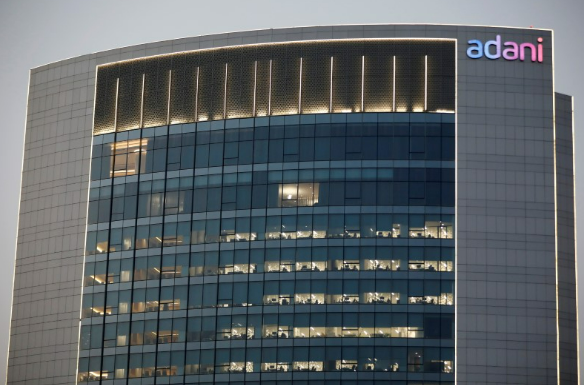
New Delhi: Billionaire Gautam Adani‘s group is prepared to go ahead alone on the USD 50 billion green hydrogen project after its French partner, TotalEnergies SE, put investment in the venture on hold following allegations of fraud. Adani group CFO Robbie Singh in an investor call on first-quarter earnings of Adani Enterprises Ltd last week stated that the project is not dependent on the equity from TotalEnergies and the group is going ahead with the investment with or without the French giant.
TotalEnergies had last year agreed to take a 25% stake in Adani New Industries Ltd (ANIL), which is building the green hydrogen project. The French energy giant in February paused the planned USD 4 billion investment pending an investigation into a US short seller’s allegations of accounting and stock manipulation, which Adani denies.
“The project is not dependent on that equity as we are going ahead with the project as it is and at the same pace,” Singh said, according to a transcript of the investor call.
ANIL is a subsidiary of Adani Enterprises Ltd, the flagship business incubating firm of the ports-to-energy conglomerate.
Singh said the MoU signed with TotalEnergies still exists but “they have to complete their due diligence”.
The French firm, with whom Adani already has partnerships in city gas and renewable power, is welcome to look at the hydrogen project.
“But that does not mean that the investment is a joint investment decision. The investment decision is still Adani Enterprises’ and Adani Enterprise is continuing with that investment and we do not anticipate, or we do not think anything that we report in relation to the change of schedule on that,” he added.
The group intends to invest up to USD 50 billion over the next 10 years to set up a fully integrated green hydrogen ecosystem in India. This includes the production of 1 million tonnes of green hydrogen in the initial phase which will be ramped up to 3 million tonnes later.
Hydrogen is a clean energy source. It is mainly used in the refining and chemical sectors and produced using fossil fuels such as coal and natural gas. Green hydrogen is produced by using electricity from renewable sources such as solar, to power an electrolyzer that splits the hydrogen from water molecules.
Adani already is the largest renewable energy producer and for the green hydrogen project, it plans to expand its solar module manufacturing capabilities at Mundra SEZ in Gujarat to up to 10 GW per annum. The Mundra factor would manufacture metallurgical grade (mg) silicon, polysilicon, ingots, wafers, cells and the module itself that are used to generate electricity from solar energy.
Sea water will be desalinated before using its electrolyzers to produce low-cost green hydrogen.
A majority of the cost of producing green hydrogen is the cost of power used to produce green hydrogen. The cost of renewable energy is currently available at less than INR 2.50 per unit (KWh) and Adani believes it can bring it down to help produce low-cost hydrogen.
Singh said the backward integration is continuing and the wafer and ingot plant is under development. “There is no change in the timelines.”
For electrolyzers, Adani has all agreements for technology in place, and development and construction work is expected to start sometime towards the end of this quarter or early in the third quarter.
Land for the solar and wind plants has been identified and site evaluation, site work and geotechnical engineering were going on, he said adding a comprehensive update on the timelines will be provided in subsequent quarter earnings.
After hydrogen is produced, it can either be transported directly (which is a risky and costly affair) or converted to ammonia, often referred to as ‘green ammonia’.
Clean hydrogen can help decarbonise a range of sectors, including long-haul transport, chemicals, and iron and steel, where it has proven difficult to reduce emissions. Hydrogen-powered vehicles would improve air quality and promote energy security as it produces just water on being burnt in an engine.
Adani has completed studies for the development of an electrolyzer with an aggregate installed capacity of up to 15 GW per annum to produce green hydrogen. It is expected to manufacture the electrolyzer in-house at Mundra SEZ and set up the green hydrogen plant in western Gujarat and Rajasthan.

